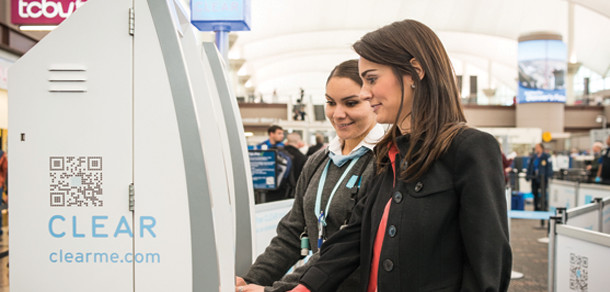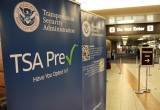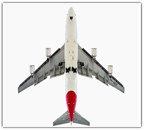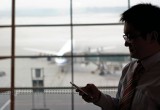Resurrected CLEAR expediting entry at airports, stadiums
14 December, 2015
category: Biometrics, Corporate, Smart Cards
Registered traveler programs are booming as airlines welcome record numbers of passengers. CLEAR, one of the programs that started it all a decade ago, is back and now operating in 13 U.S. airports and three Major League Baseball stadiums.
The original incarnation of CLEAR launched at Orlando International Airport in 2005 and quickly grew to more than a 18 airports. But it was hit with bad publicity in 2008 when an unencrypted laptop containing personal information of 33,000 CLEAR users disappeared. The Transportation Security Administration suspended new enrollment, and in June of 2009, the company went bankrupt.
The following year, new investors emerged. “We bought the assets out of bankruptcy in early 2010, and we relaunched the business in November of 2010 at Denver International Airport and Orlando International Airport,” says president and CFO Ken Cornick, one of the co-founders of the new CLEAR. “We had nothing to do with the old company.”
The new team saw the potential for a viable business by implementing a better cost structure and holding growth to a manageable pace. “We saw a sort of beloved product. People really loved the service,” Cornick says. “Who wants to wait in line at an airport? Users were missing the service and they wanted it back.”
CLEAR customers can sign up online or at a participating airport. They complete the registration in person by showing an ID and having their fingerprints and iris image captured. A CLEAR card with a contact chip is issued as the identification credential for an annual fee of $179.
“Once you’re enrolled, you can walk over to the security checkpoint and use CLEAR immediately,” Cornick says. Users scan their boarding pass, tap their finger, and move directly to the physical screening.
“You’re getting your ID checked and your boarding passes validated,” he says. “That’s the first step, and that’s where CLEAR provides an efficient, predictable experience so you know you’re going to get through the process in generally five minutes or less.”
Cornick would not disclose enrollment numbers, but he says the business is thriving and just began operations at its thirteenth airport in Austin, Texas.
Not Just For Airports
CLEAR is expanding its business model beyond airports. Major League Baseball now requires all 30 of its teams to screen fans using hand-held metal detectors or walk-through magnetometers, and CLEAR is expediting access at the Colorado Rockies, New York Yankees and San Francisco Giants stadiums.
The partnership with the Giants was CLEAR’s first expansion outside of the travel industry. The team and the company spent about two years trying to find the easiest and most efficient way to usher fans into the stadium. Beta testing of the program began at AT&T Park late last year, and it was opened to all Giants fans this season.
“A facility of any real size has to be safe for fans, and magnetometers were not going to be optional. They were going to be a requirement at some point, and we wanted to try to get ahead of it,” says Jason Pearl, senior vice president of sponsorship and business development for the Giants.
“Knowing that our fans are technophiles in many ways and willing to be early adopters of technology, we felt like we could be the right market to implement something like CLEAR,” Pearl says. “But it took us a while to figure it out because it’s fairly complex from a marketing and public relations standpoint – determining who gets to use a CLEAR entry and why. So, figuring out what the rules are was just as important as making sure the technology was working.”
For now, the stadium has one CLEAR lane open and CLEAR personnel operate it. “You put either your thumb or two fingers down on a tablet and it biometrically recognizes who you are,” Pearl says. “If you are verified, your face pops up on the tablet and a green light goes off which tells everybody that you are now clear.”
The Giants started with a small group of fans to see how the traffic would flow. As enrollment increased, organizers had to make sure the CLEAR entrance wasn’t so clogged with users that it was slower than the regular entrances. At the same time, other fans were adjusting to the magnetometers.
“CLEAR has been a fantastic partner helping us work with major league baseball’s security personnel to confirm that the algorithm that allows us to know that a fan is clear, if you will, is something that meets that standard,” says Pearl.
CLEAR users must still submit to bag checks, just like other fans, but they avoid waiting in line to go through the magnetometer. “We haven’t had any push back whatsoever,” Pearl says of the CLEAR option.
AT&T Park sells out at just under 42,000 seats. So far, more than 11,000 Giants fans have been verified with CLEAR. That number doesn’t include fans who may already be CLEAR members at airports. The airport membership can be used to get into AT&T Park without the need for a separate verification, and Giants fans can apply to use the service as well. After signing up with CLEAR online, enrollment can be completed at a kiosk in front of the ballpark.
“This is about the community of our fans having a better process,” Pearl says. “Even if only 10% of our fans are coming through the CLEAR entrance and being verified, it’s a better process for the other 90%, too.”
Even if only 10% of our fans are coming through the CLEAR entrance, it’s a better process for the other 90%, too
CLEAR offers service in tandem with TSA PreCheck
The TSA launched its expedited security screening program, PreCheck, in October of 2011. It’s grown to more than 150 airports with 12 participating airlines. The $85 fee is good for five years of PreCheck status.
According to the TSA, more than 1.5 million travelers are enrolled in PreCheck. MorphoTrust USA’s IdentoGO service handles enrollment at more than 330 application centers around the country, soon to expand to more than 400 centers thanks to a partnership with tax service provider H&R Block.
Registered traveler programs like CLEAR are not affiliated with PreCheck, and some travelers may enroll in both programs. CLEAR members who are enrolled in PreCheck can use the CLEAR lane to avoid long security lines and have their boarding passes scanned. They can then move to the PreCheck lane where they get a new round of perks. Unlike the other passengers, PreCheck users don’t have to remove their shoes, belts, jackets, liquids or laptops.
By comparison, CLEAR performs background checks and biometric scans to verify customers who are permitted to go to the front of the line for the physical screening. After their boarding passes and travel documents are checked, their special privileges end. They still have to take off their shoes and perform the other tasks like other travelers, but they get to go to the front of the line.
While the TSA is encouraging as many air travelers as possible to enroll in PreCheck, the team at CLEAR sees a lot of applications for their platform beyond airports and stadiums. The company is eyeing real estate next.
“If you go to a New York City building, you’re showing your driver license. They’re scanning it and taking a picture of you. It’s a pretty inefficient process,” Cornick says. “So we think there’s opportunities for secure biometric identification in things like building access, and there’s many other applications.”
“When we bought the business, our vision was always to create CLEAR as a secure identity platform that could be used anywhere a secure transaction was required,” Cornick says. “The vision all along was to expand outside of the airports.”




